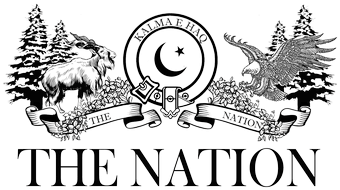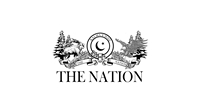Europe is in a time of major increases in military expenditures, and the USA has already had very high military budgets for a long time. We hear about quantitative increases, less about the qualitative ones, and hardly anything about broader peace creation efforts. With President Trump in office, the USA puts pressure on all the other NATO countries to spend more on the military; the NATO members are now 32 in all, including the USA, the largest contributor; the USA spends some 3.7 percent of its GDP on the military. Trump says each country should spend 3-5 percent of BNP on defence. Fair enough, many politicians say, since America pays for and controls most of America’s and Europe’s military. Also, many European countries, and left-oriented groups in the countries, have long wanted to reduce the upper hand of the Americans in defence policies, as it all is based on a model established at the end of WWII, indeed with America at the top. It is still a fact that America has military personnel and installations in many foreign countries, including in Europe, over eighty years after the war. America also has major military R&D activities, and it certainly has huge military trade with its allies and beyond. Without that, the American economy would have been much smaller and less innovative.
I shall not go into details about the sizes of the different European countries’ and NATO members’ budgets. Yet, for comparison, it should be mentioned that the USA spends about ten times as much as Russia on the military, even though Russia has certainly increased its expenditures much since the beginning of the invasion of Ukraine. But figures from 2023 show that the USA spent over USD 1000 billion on the military, and Russia spent about USD 109 billion. The increases in military budgets by many European countries have gone up very much in recent years, with some countries now spending double or triple on defence as compared to a few years ago. Also, manufacturing of equipment, ammunition, advanced military planes, and so on, and in our time, drones and other new and advanced technology. The nuclear arsenals are huge in the USA and Russia.
Again, there is a major rearmament of the West, especially the European NATO member countries, with Finland and Sweden as the latest NATO members from 2023 and 2024, respectively. Sweden was a neutral, yet clearly Western oriented country for hundreds of years. Today, the country spends about 2.4 percent of its GDP on defence, intending to increase it further. Although many European countries are small in population, their economies are sizeable. Norway, for example, with a population of just 5.6 million people, has the world’s 32nd largest economy, and it has reached 2 percent of GDP on defence and plans to increase it further. It is one of the major donors of military and humanitarian assistance to Ukraine, and spends about one percent on development aid.
The main reason for Europe’s huge rearmament at this time has to do with Russia’s invasion of Ukraine and further tension between Russia and the West, and also trade and other competition for world leadership between China and Europe, indeed including the USA. China’s economic development remains on steady rise. Russia’s economy is relatively small, about the same size as that of Italy, but Russia is the world’s largest country by territory, rich in minerals and natural resources, and has several other advantages, yet, with shortages in democracy development and innovation, considered essential for long-term stability and development. Russia’s long-lasting conflicts with and invasions of most of its fourteen immediate neighbours, is a scar on Russia’s history and reputation, and its ability for future peaceful internal and external development.
The Soviet Union ended in 1989/92, and at that time there was hope and possibilities for a peaceful, new course for the country. Alas, both Europe and Russia missed the opportunity. In hindsight, many would say that the way Ukraine was separated from Russia in 1991 to become an independent country (yet, having to give up its nuclear weapons), was overambitious and not well planned. But there were possibilities for other arrangements in the two decades leading up to Russia’s full invasion of Ukraine on 14 February 2022, after its earlier annexation of Crimea and disputes for the returning to Russia of some areas in Eastern Ukraine, with the Minsk Agreements being unsuccessful. When the situation has become as it now is, it will be complicated to return to peaceful and cordial relations between two countries who have many similarities and would mostly benefit from peaceful cooperation. We mostly blame Russia for its aggression, with good reason. However, NATO and Europe should have been able to avoid the ongoing military conflict, and after it had begun, NATO should have played a peace-creating role. It is also a fact that Europe, including the EU, should have played a much more proactive role in helping Russia in its change major processes from communism to capitalism with economic. I am afraid that historians will not look kindly at what happened; new opportunities to modernise Russia, with its many structural problems, will take long to reoccur, and the restoring of modern international relations.
In addition to the direct conflict between Russia and the West, with the more than three-year long Russia-Ukraine War, there are several other war and peace issues that are not addressed. The enormous increases in military budgets seem to be made without fundamental discussions of the reasons for the specific military investments, and certainly, the broader philosophy and purpose of defence. In many ways, the cart has been put before the horse. Huge investments are made without the necessary analyses of what to do and why, even if considered within a military thinking, and certainly if considered in broader, alternative and sustainable peace development perspectives.
It is difficult to accept the enormous increases in military expenses in the West, but also in other countries, including poor African countries. It seems that the international community, including the UN, does not place peace issues high enough on the agenda – although it is obvious that their early initiatives would have avoided conflicts, cost less money, and had less devastation on people’s displacement and suffering. Indeed, lower military expenses would leave money and people for other essential tasks, such as health and education, and peacebuilding and development. There is urgent need and work to be done in the world, certainly now when differences grow between rich and poor everywhere.
Without more sharing of resources and democratic development efforts, the future will not be peaceful and prosperous. This we all know; the problem is that we don’t follow the obvious knowledge. It is not possible to understand why NATO, with all its advanced knowledge and experts, can allow the Russia-Ukraine War to go on – and that the unprecedented rearmament can escalate. In the last few decades, we were many who had expected to see more peace and harmony in our time, and reduced military expenditure. Alas, our leaders and we the people, too, seem to have gone the wrong way. Now it is time to turn around before it is too late, although it is already in the eleventh hour.
To begin the major change now would be a very appropriate action at the end of this year’s Ramadan, and towards the end of Lent. Even those who don’t pray often may have realized that prayer is one of the few options left – and prayer always has the key aspects of listening and trying to see issues from the other sides. In it all, there is hope for a better world and a promised land – and then it is for each of us to do what we can and help create peace and peaceful thinking in practice – InshahAllah.
Wishing you Ramadan Kareem and Eid-ul-Fitr Mubarak
Atle Hetland
The writer is a senior Norwegian social scientist with experience from university, diplomacy and development aid. He can be reached at atlehetland@yahoo.com






